Stepping Into Roman History in Eastern Serbia
If you’ve ever dreamed of walking through a forgotten Roman palace, untouched by crowds and surrounded by green hills, Felix Romuliana in eastern Serbia is the place. Tucked away near the modern town of Zaječar, this UNESCO World Heritage Site is one of the most remarkable—and underrated—archaeological treasures in Europe. Built by the Roman Emperor Galerius in the late 3rd and early 4th century AD, the complex is steeped in imperial ambition, mythology, and ancient art. Felix Romuliana isn’t just a stop for history buffs. It’s an experience that mixes quiet discovery with the thrill of stepping into a real piece of Roman imperial life. Here’s how to plan your visit and make the most of it.

Getting There – Planning Your Trip to Felix Romuliana
Reaching Felix Romuliana isn’t difficult, but it does take a bit of planning. The site lies about 4 kilometers from Zaječar, a town in eastern Serbia, and roughly 250 kilometers southeast of Belgrade. The most convenient way to get there is by car. Renting a vehicle gives you the freedom to explore the area at your own pace, and the drive is pleasant, passing through vineyards, rolling hills, and old Serbian villages.
From Belgrade, the drive takes around 3.5 hours. You’ll take the A1 highway to Paraćin, then head east through Zaječar. From Niš, it’s about 2.5 hours on regional roads. GPS will recognize “Gamzigrad” or “Felix Romuliana,” though the signs near the site are limited, so stay alert.
Public transport is also an option. You can take a bus or train to Zaječar from Belgrade or Niš. Once in Zaječar, a short taxi ride or local bus can get you to the site. However, service may be infrequent, so it’s smart to check schedules in advance.
The site is open year-round, usually from morning until early evening (typically 8:00–16:00 in winter, 8:00–18:00 in summer). Entry is very affordable—just a few euros. It’s best to visit during spring or early autumn for comfortable weather and good light for photography. Bring water, wear sturdy shoes, and don’t forget sun protection—the terrain is open and unshaded.
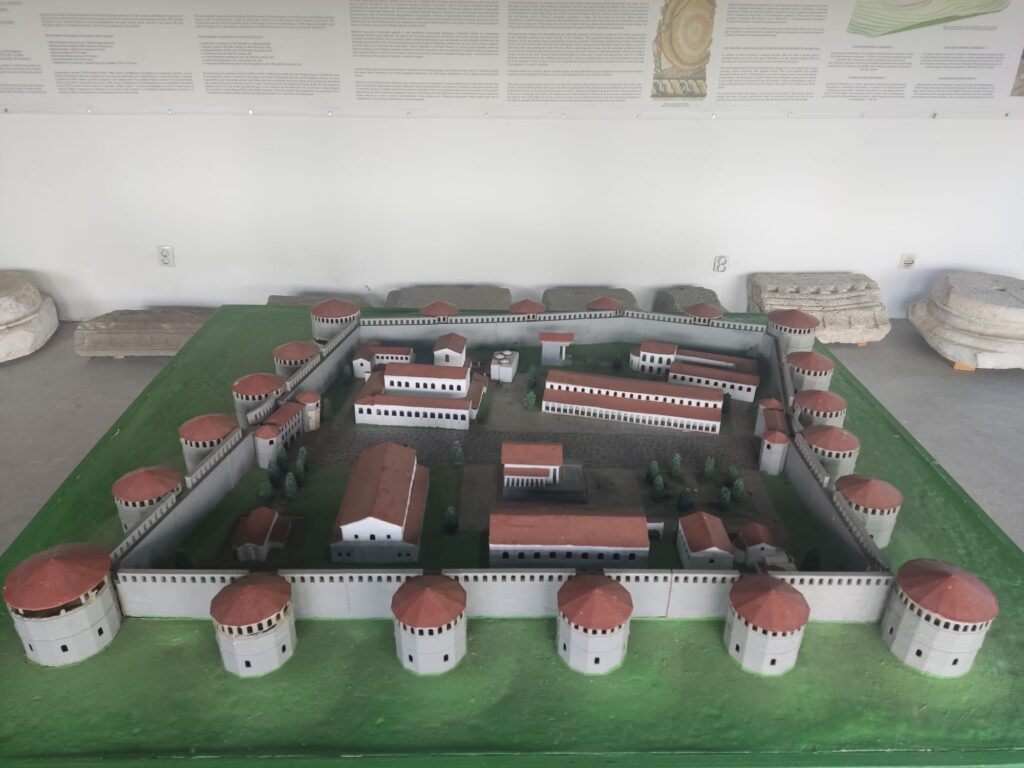
First Impressions – Arriving at the Site
As we approached Felix Romuliana, the landscape shifted into something quietly majestic. Low hills stretch around you, and vineyards line the road, giving no real hint of the Roman marvel waiting ahead. You’ll spot a modest sign for “Gamzigrad,” and soon after, the stone towers of the ancient complex rise into view.
There’s a small parking area near the entrance, and you’ll likely find it almost empty. That’s part of the magic. Unlike more famous Roman ruins, this place isn’t overrun with tourists. We didn’t share the site at all. That gave us a deeply personal, almost meditative experience. As we entered through a reconstructed gatehouse, the first stone walls and towers showed the scale of Galerius’s vision. It’s not just a ruin—it’s a fortress, a palace, and a sacred space all in one. It was intended for his retirement, but he didn’t live long enough for retirement.
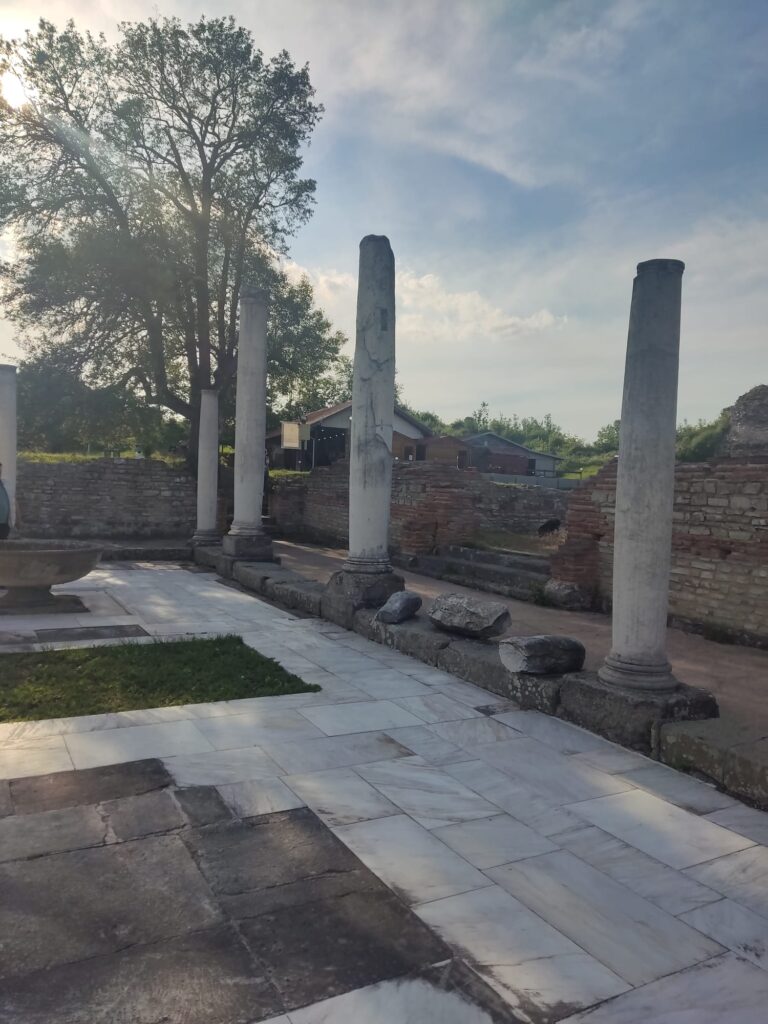
Exploring the Palace Complex – Walking Through Roman Grandeur
Once inside the ancient walls, the scale and layout become clearer. Emperor Galerius named the site after his mother, Romula, and intended it, besides, as a residence, also as a monumental tomb for both of them. The complex is shaped like a Roman castrum (military camp) with two main gates, massive polygonal towers, and thick fortifications. The stonework is well preserved, and the design reflects a blend of military practicality and imperial luxury.
The real highlights, though, are inside: two palatial buildings, a set of public baths, ceremonial halls, and remains of temples. As we walked the stone paths, we came across breathtaking Roman mosaics—some still in situ, others moved for protection. These mosaics, featuring Dionysian scenes and geometric patterns, are among the finest found anywhere in the Roman world. Actually, if you see layers of sand, it means that there is a mosaic underneath, protected by the sand.
A particularly evocative spot is the area thought to be the sacrificial altar, where Galerius may have performed rites for his deified family. Another is the residential quarter, where you can trace the outlines of rooms and courtyards, imagining the daily life of an emperor and his court. While the site has signage in both Serbian and English, a guide can bring it to life even more. Local tourist agencies or the museum in Zaječar can arrange guided tours in advance.
For me, the highlight of the experience was the view of two artificial hills, made for the deification process for Emperor Galerius and his mother. Probably the last deification process in Roman history before Christianity.
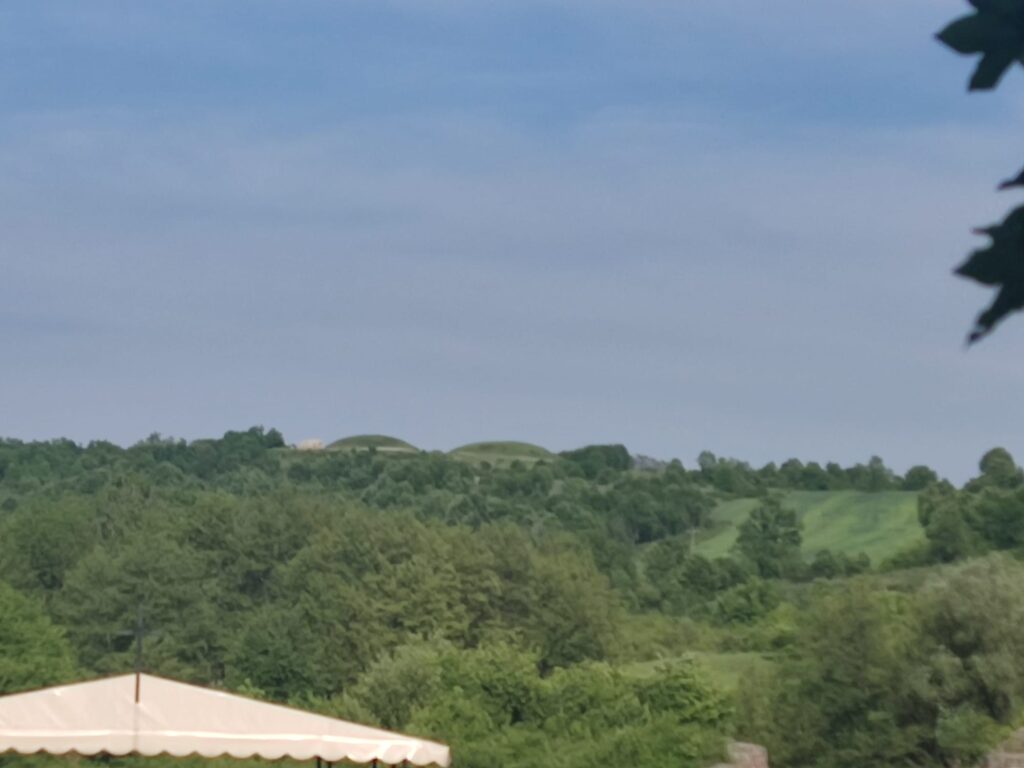
The Museum Experience – Ancient Beauty up Close
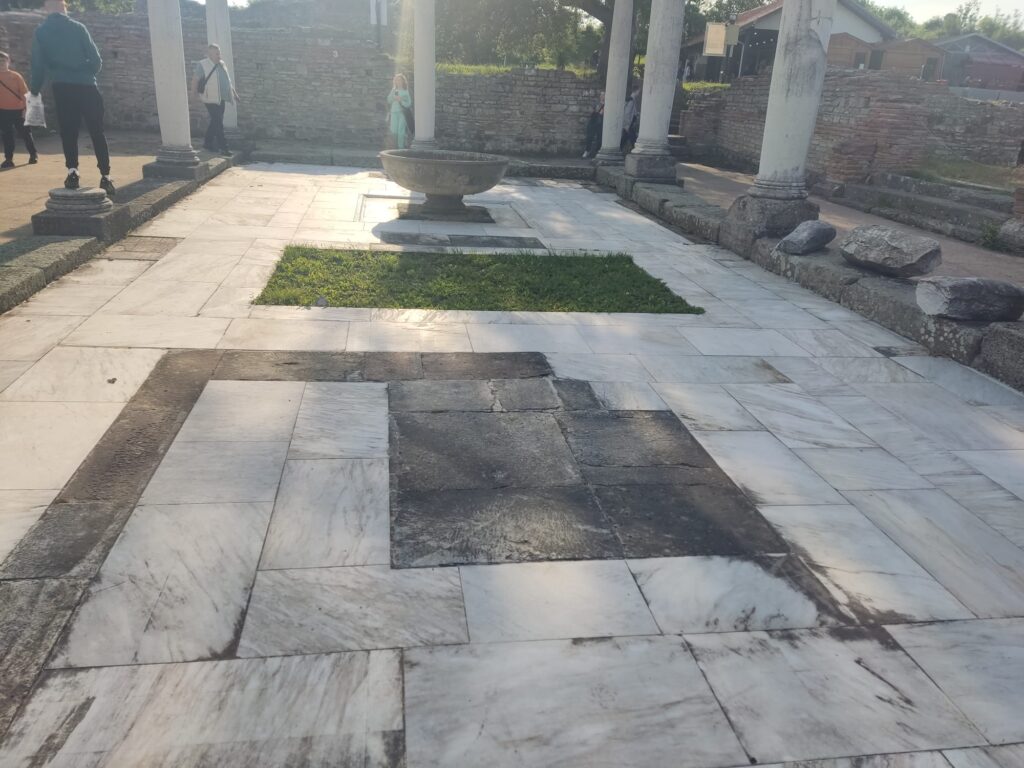
Though the ruins are the centerpiece, the nearby National Museum in Zaječar holds much of what was discovered at Felix Romuliana—and it’s well worth a stop. The museum is about 10 minutes away by car and houses statues, coins, jewelry, and some of the site’s finest mosaics and decorative elements.
Among the most famous finds are two remarkable porphyry busts: one of Galerius and one of his mother, Romula. These statues, originally placed in the ceremonial center of the palace, show the imperial family in divine pose, echoing Roman religious traditions but also early Christian imperial imagery.
The museum gives essential context. It explains how the palace was both a statement of political power and a personal sanctuary. It also explores the mystery of Galerius himself—a complex figure who persecuted Christians but ruled during their eventual rise to power.
Making the Most of Your Visit to Felix Romuliana– Tips and Final Thoughts
Plan to spend around two hours at the site itself, more if you’re interested in archaeology or photography. The open layout encourages slow exploration, and the ruins are especially beautiful in the golden afternoon light.
If you’re visiting in summer, consider pairing your trip with a stop at one of the local wineries, which produce unique Balkan varietals. Zaječar also has restaurants where you can enjoy Serbian specialties like grilled meat (ćevapi), bean soup, and local cheeses.
For travelers interested in Roman history, Felix Romuliana is a must. It tells a story that bridges the old empire and the Christian future, all set in a tranquil and uncommercialized part of Europe. For casual tourists, it offers a peaceful escape, a powerful sense of place, and a reminder that some of the world’s greatest treasures are hiding in plain sight.
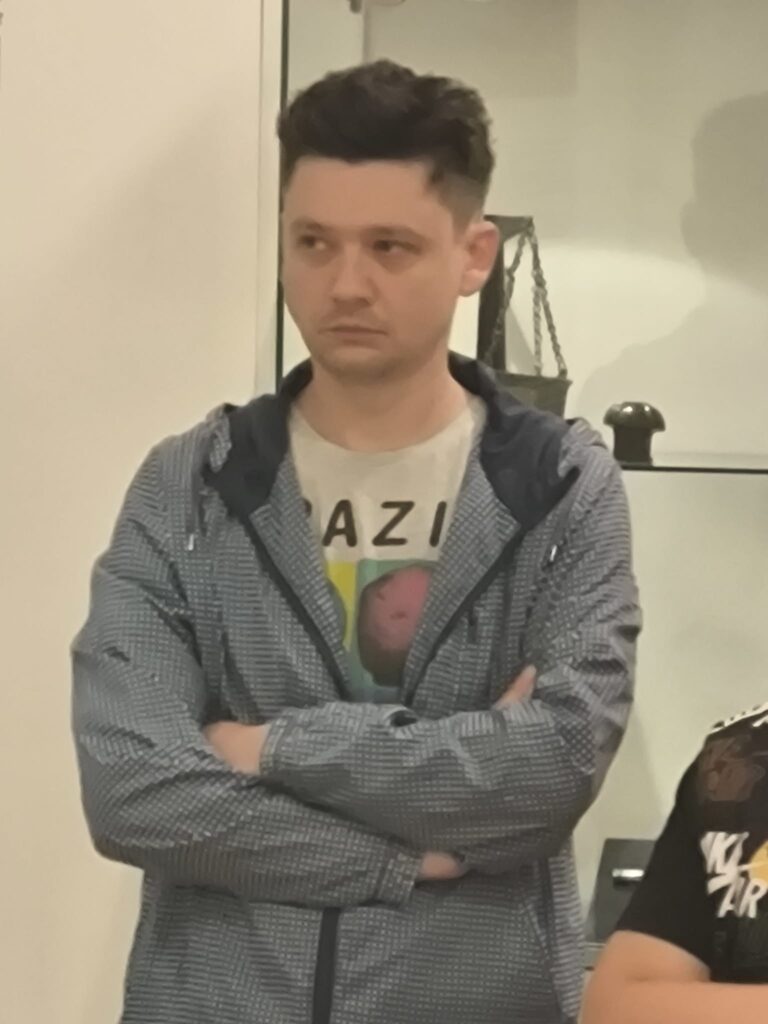
Visiting Felix Romuliana is more than a history lesson. It’s a personal journey—through vineyards and valleys, through stone and myth, and into the fading light of the Roman Empire’s eastern edge.
Hello, my name is Vladimir, and I am a part of the Roman-empire writing team.
I am a historian, and history is an integral part of my life.
To be honest, while I was in school, I didn’t like history so how did I end up studying it? Well, for that, I have to thank history-based strategy PC games. Thank you so much, Europa Universalis IV, and thank you, Medieval Total War.
Since games made me fall in love with history, I completed bachelor studies at Filozofski Fakultet Niš, a part of the University of Niš. My bachelor’s thesis was about Julis Caesar. Soon, I completed my master’s studies at the same university.
For years now, I have been working as a teacher in a local elementary school, but my passion for writing isn’t fulfilled, so I decided to pursue that ambition online. There were a few gigs, but most of them were not history-related.
Then I stumbled upon roman-empire.com, and now I am a part of something bigger. No, I am not a part of the ancient Roman Empire but of a creative writing team where I have the freedom to write about whatever I want. Yes, even about Star Wars. Stay tuned for that.
Anyway, I am better at writing about Rome than writing about me. But if you would like to contact me for any reason, you can do it at contact@roman-empire.net. Except for negative reviews, of course. 😀
Kind regards,
Vladimir
